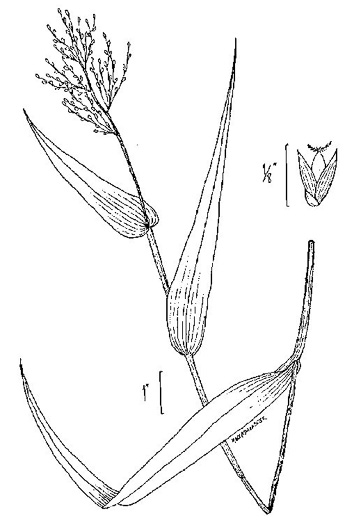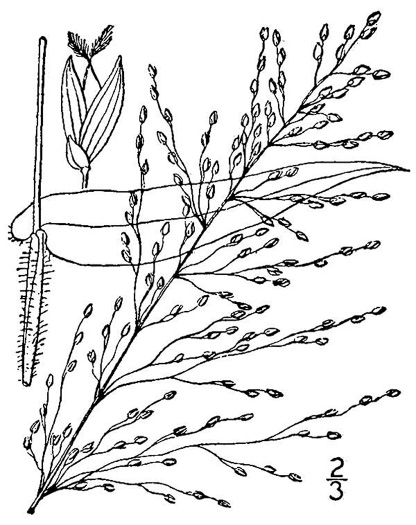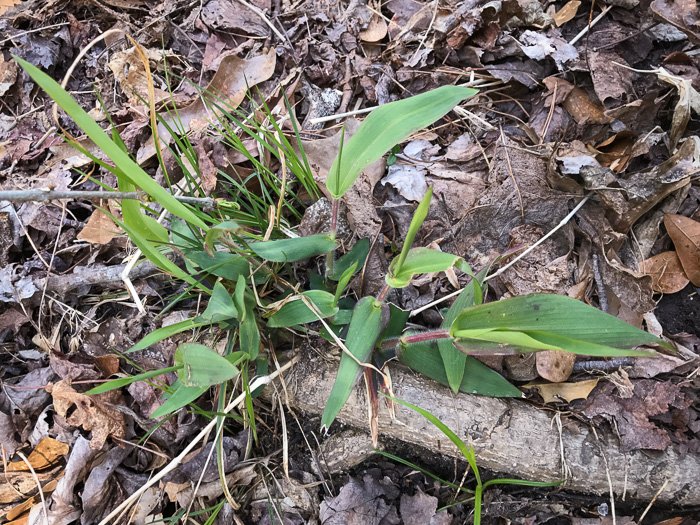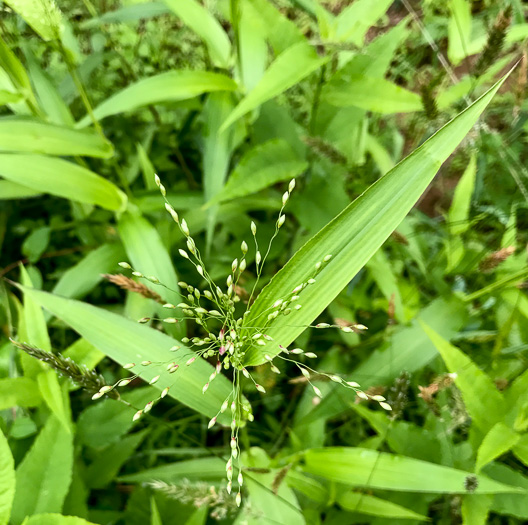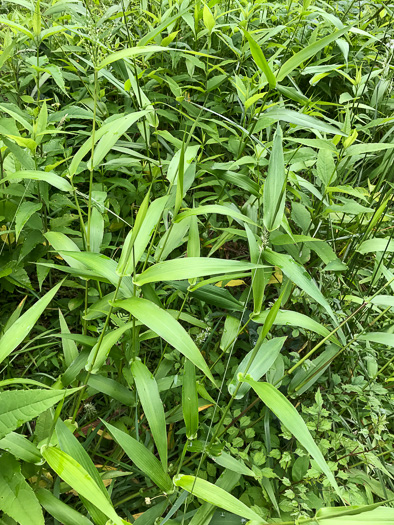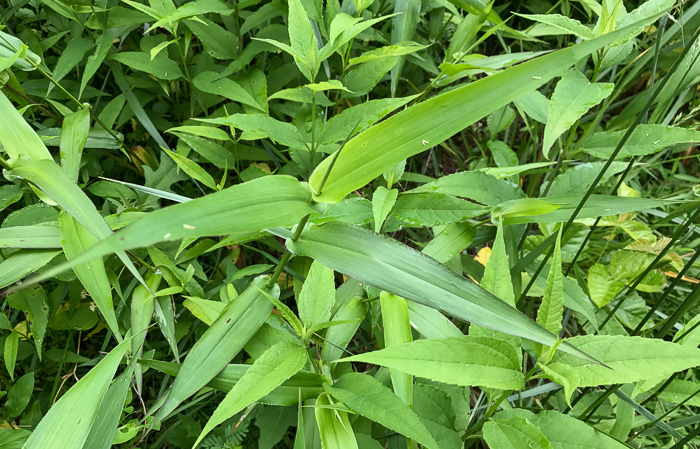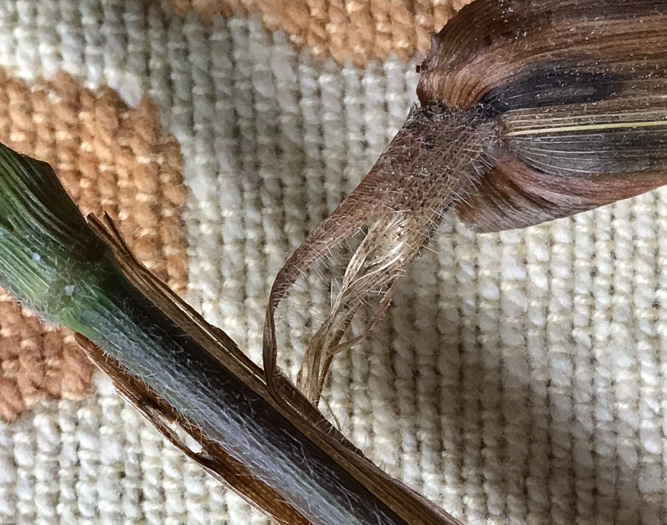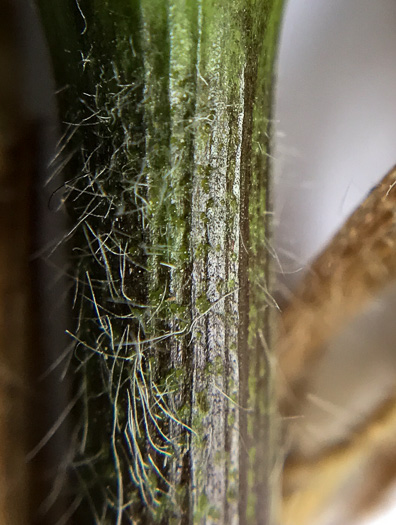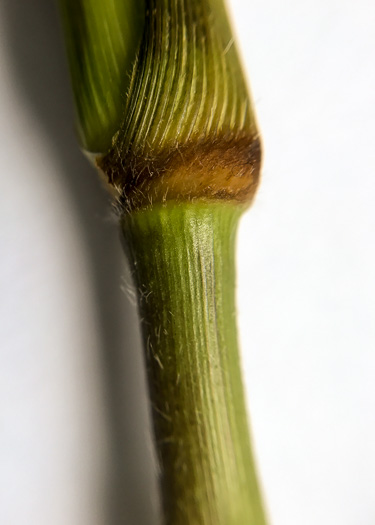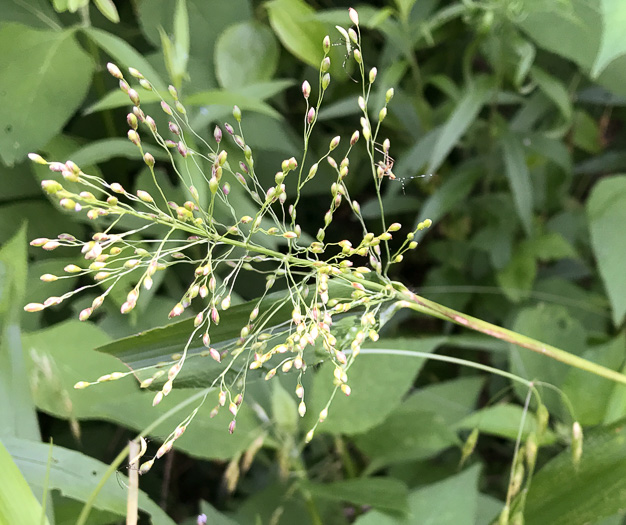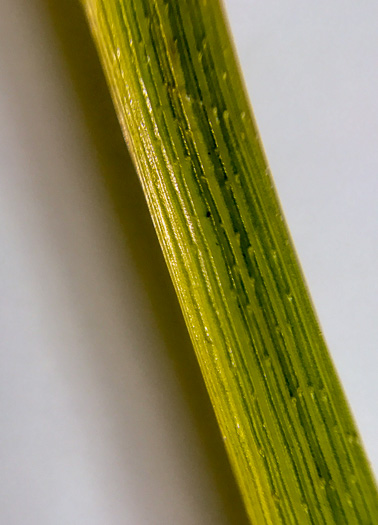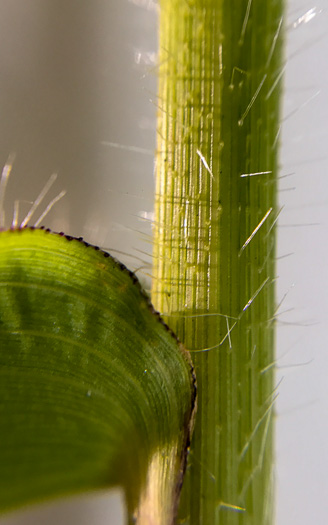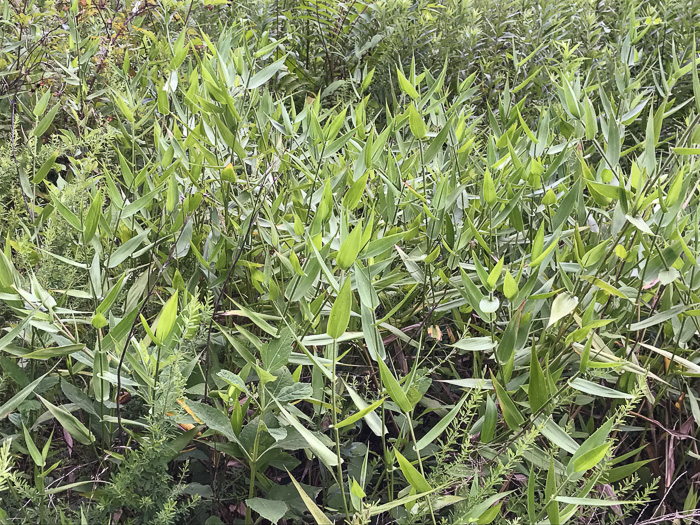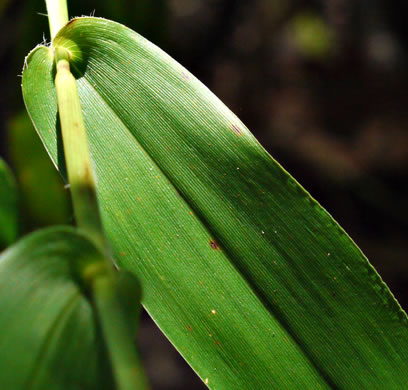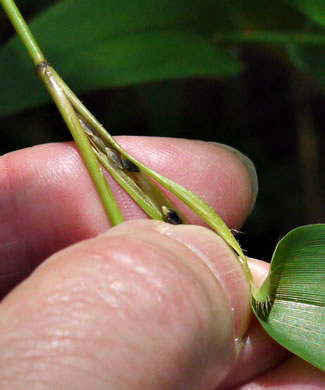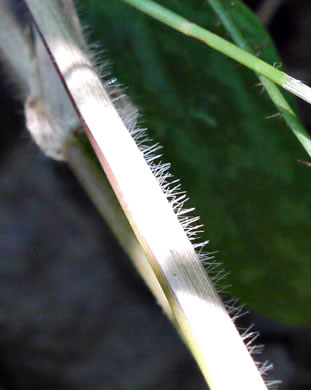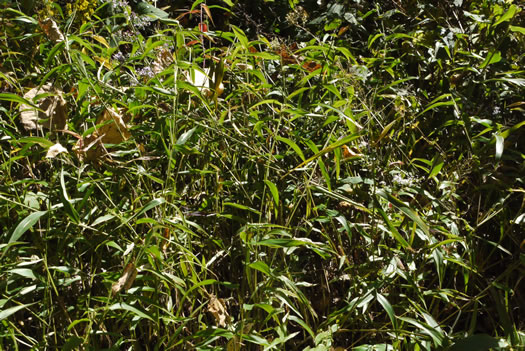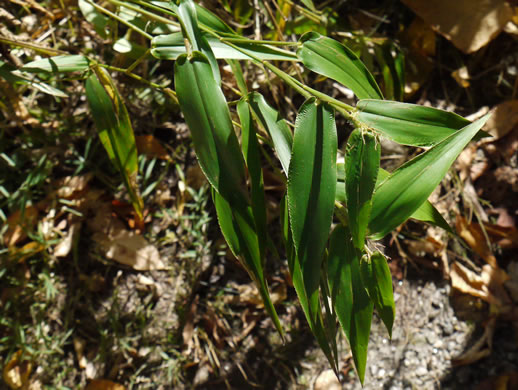Spermatophytes (seed plants): Angiosperms (flowering plants): Monocots: Commelinids: Poales
WEAKLEY'S FLORA OF THE SOUTHEASTERN US (4/24/22):
Dichanthelium clandestinum
FAMILY
Poaceae
Go to FSUS key
Dig deeper at SERNEC, a consortium of southeastern herbaria.
This robust Dich is easy to identify, with its often overlapping leaf sheaths (thus, parts of the stem are not visible) and stiff hairs on the sheaths. The vernal inflorescence is visible, but autumnal ones are hidden within the leaf sheaths. Learn more at Vascular Plants of North Carolina.
SYNONYMOUS WITH
PLANTS NATIONAL DATABASE:
Dichanthelium clandestinum
FAMILY
Poaceae
SYNONYMOUS WITH Flora of North America north of Mexico, vol. 25 (2003)
Dichanthelium clandestinum
SYNONYMOUS WITH VASCULAR FLORA OF THE CAROLINAS (Radford, Ahles, & Bell, 1968) 029-81-061:
Panicum clandestinum FAMILY Poaceae
SYNONYMOUS WITH Manual of the Grasses of the US (Hitchcock & Chase, 1950)
Panicum clandestinum
SYNONYMOUS WITH Manual of the Southeastern Flora (Small, 1933, 1938)
Panicum clandestinum
COMMON NAME:
Deer-tongue Witchgrass
To see larger pictures, click or hover over the thumbnails.
JK Marlow jkm200525_5183
May Greenville County SC
Tall Pines Wildlife Management Area
Vernal inflorescences visible; autumnal ones hidden within the leaf sheaths, per Vascular Plants of North Carolina.
JK Marlow jkm200525_5190
May Greenville County SC
Tall Pines Wildlife Management Area
Vernal culms in large clumps, robust, tall (up to 1.5m), per The Grasses of North Carolina (Blomquist, 1948).
JK Marlow jkm200525_5192
May Greenville County SC
Tall Pines Wildlife Management Area
Blades spreading or finally reflexed, 10-20cm long, 1.2-3cm wide, per Manual of the Grasses of the United States (Hitchcock & Chase, 1950).
JK Marlow jkm200526_5336
May Greenville County SC
Tall Pines Wildlife Management Area
Leaf sheaths often overlapping (thus, parts of the stem are not visible), per Vascular Plants of North Carolina.
JK Marlow jkm200528_5357
May Greenville County SC
Tall Pines Wildlife Management Area
Leaf sheaths (at least the lower ones) papillose-hispid with spreading hairs, per Weakley's Flora (2020).
JK Marlow jkm210714_2218
July Greenville County SC
Blackwell Heritage Preserve
Vernal culms in large dense clumps, 70-150cm tall, per Manual of the Grasses of the United States (Hitchcock & Chase, 1950).
JK Marlow jkm130824_586
August Spartanburg County SC
Blades glabrous both surfaces, margins scaberulose, bases cordate, ciliate, per Vascular Flora of the Carolinas (Radford, Ahles, & Bell, 1968).
JK Marlow jkm130824_592
August Spartanburg County SC
Seed from reduced panicles of summer-fall cleistogamous flowers in leaf sheath
JK Marlow jkm130824_595
August Spartanburg County SC
Sheaths papillose-hirsute to almost glabrous, per Vascular Flora of the Carolinas (Radford, Ahles, & Bell, 1968).
JK Marlow jkm111008_786
October Jackson County NC
Balsam Mountain Preserve
Autumnal culms erect or leaning, the branches leafy, per Manual of the Grasses of the United States (Hitchcock & Chase, 1950).
WEAKLEY'S FLORA OF THE SOUTHEASTERN US (4/24/22):
Dichanthelium clandestinum
FAMILY
Poaceae
SYNONYMOUS WITH
PLANTS NATIONAL DATABASE:
Dichanthelium clandestinum
FAMILY
Poaceae
SYNONYMOUS WITH
Flora of North America north of Mexico, vol. 25
Dichanthelium clandestinum
SYNONYMOUS WITH
VASCULAR FLORA OF THE CAROLINAS (Radford, Ahles, & Bell, 1968) 029-81-061:
Panicum clandestinum
FAMILY
Poaceae
SYNONYMOUS WITH
Manual of the Grasses of the US (Hitchcock & Chase, 1950)
Panicum clandestinum
SYNONYMOUS WITH
Manual of the Southeastern Flora (Small, 1933, 1938)
Panicum clandestinum
If a search such as "Carex leptalea var. leptalea" doesn't deliver the results you want, try "Carex leptalea".
Or, to minimize chances of a misspelling, try just "Carex le".
Less is more: If "pencil flower" doesn't deliver the results you want, try "pencil".

